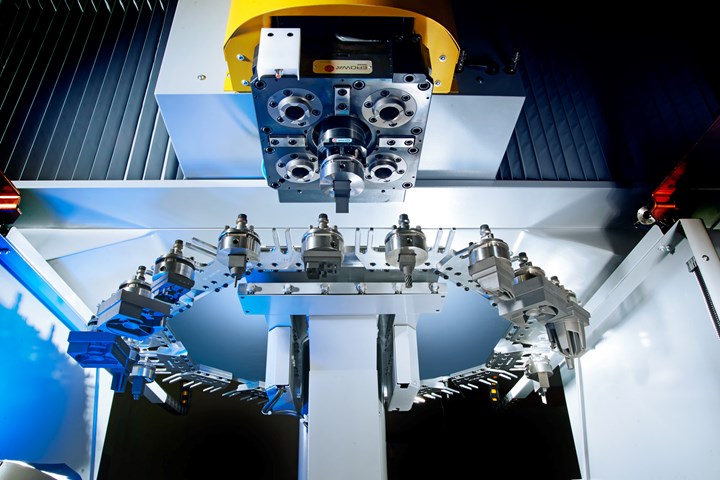
The most important advancement in EDM is speed, which means fewer electrodes and finer surface finishes. Photo Credit: MC Machinery Systems.
The most significant sinker EDM advancements involve machine design, software, artificial intelligence (AI) technology and automation systems. These evolutions help to meet critical moldmaking demands, such as higher precision, shorter lead times, reduced costs and greater repeatability. Here are five of the newest EDM enhancements:
- Speed has been the primary development for sinker EDMs, yielding fewer electrodes and finer surface finishes. In many cases, the surface finishes require minimal to no secondary manual polishing time. By combining automation systems, palletization and user-friendly operation with the latest sinker EDM developments, mold builders are improving consistency and increasing unattended machining hours.
- Innovations in machine design are essential to this increased speed. Improved features include thermal stability, additional rigidity and AI that enable higher precision, higher jump speeds and exacting consistency. In addition, some sinker EDMs incorporate real-time active sensors that alert operators to temperature changes and volumetric errors. Others include functions to monitor the environment within and around the machine to help moldmakers maintain better climate control and improve accuracy.
- The increasing complexity of many workpieces requires better sinker EDM performance and automation solutions that perform frequent changeovers between machines — for example, implementing a robot on a sinker EDM to automatically change electrodes while changing out parts or adding a graphite and hard milling machine into a cell for a complete solution.
- EDMs with robust adaptive controls are usually the easiest and least expensive machines to automate. Additionally, intuitive, smartphone-like controls make machines more user-friendly and appealing to the next generation of moldmaking professionals.
- EDMs with AI enable the operator to enter/answer simple questions on the control before the machine takes over. Also, an AI-enabled sinker EDM may use real-time condition monitoring within the burn and directly modify specific parameters for a stable cut that produces optimal results. Because AI technology analyzes this data, it can reduce overall electrode wear and cost.
RELATED CONTENT
-
What Does Automation Look Like in Moldmaking?
There are a variety of technologies and products that can help optimize and automate the manufacturing processes involved in moldmaking.
-
Five-Axis Graphite Mill With Automation Debottlenecks Electrode Machining
Five-axis electrode cutting enabled Preferred Tool to EDM complex internal screw geometry on an insert that otherwise would have had to be outsourced.
-
MoldMaking Conference Session Spotlight: Automation
Want to learn how to use automation to solve the "productivity puzzle" or how to choose between “lights out” or “unmanned” automation or how to implement a three-phased automation approach?










